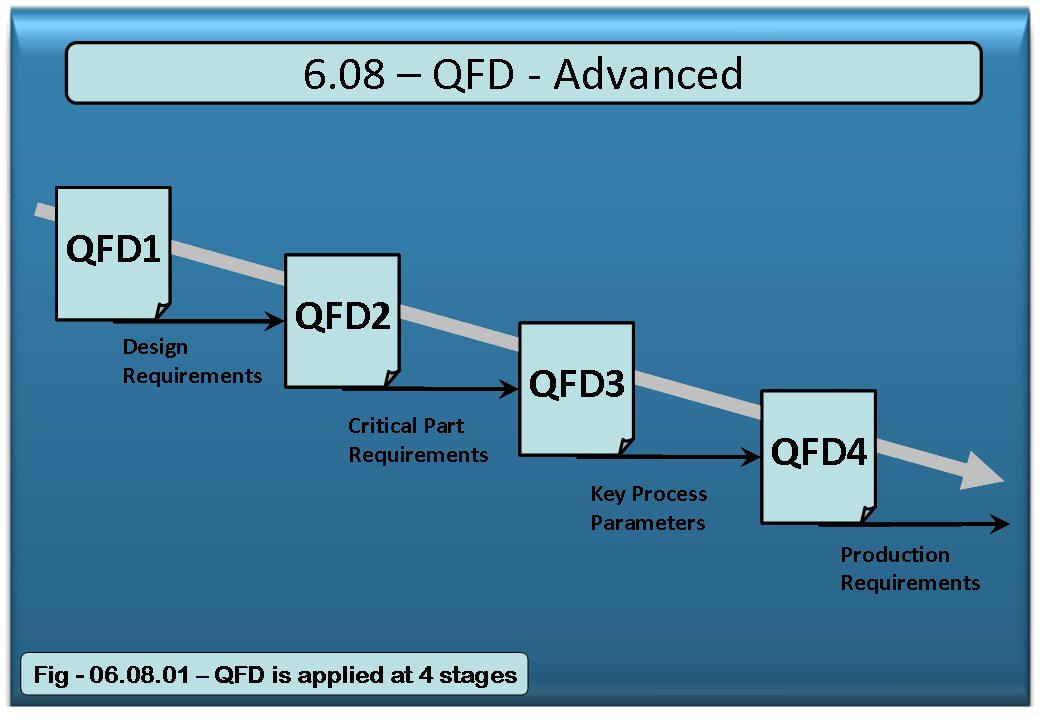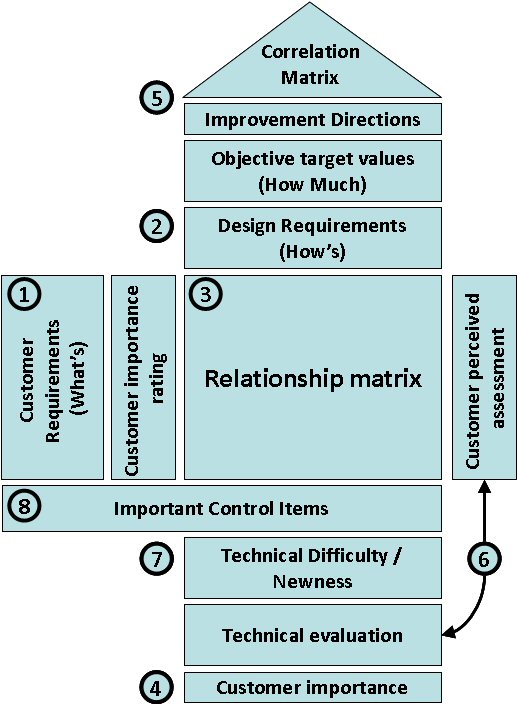6.08 - Quality Function Deployment II
QFD Further Information
Quality Function Deployment (QFD) is a detailed planning and design process technique applicable to any design process whether for services or products. It is aimed at translating the “voice of the customer” into company specifications at every stage of the New Product Introduction process.

QFD is Applied at Four Stages
Stage 1 – Translates customer requirements into design requirements
Stage 2 – Translates design requirements into critical part characteristics
Stage 3 – Translates critical part characteristics into key process parameters
Stage 4 – Translates key process parameters into production requirements
The elements of stage 1 are shown in the next diagram. Stages 2, 3, and 4 follow a similar matrix approach.
Stages 1 Customer ‘wants’ versus design ‘hows’:-
1) What is important to the customer (customer requirements)
2) How are these to be satisfied (design requirements) and by how much – the objective target values.
3) Relationships between customer requirements and design requirements
4) The relative customer importance of those design requirements
5) – 8) Detailed customer and technical assessments.
This provides the key requirements for achieving customer satisfaction and hence product successes. It ensures continuous effective use of resource, by focusing on the essential areas for achieving customer satisfaction.
The first phase of QFD focuses on understanding the customer requirements, not just of the end user, anyone who influences the form of the design. For example, the service or after sales requirements, considerations for handling and packaging, or the requirements for product installation etc. – all areas which should be satisfied if the product is to be successful in all aspects of its final use.
One useful aspect is to identify which requirements can be satisfied by collecting them into a product module or sub-assembly (see guide 6.18 & 6.20)
Through this continuous focusing from one level to the next, effort expended effectively on satisfying or even delighting the customer!

Benefits
- Structured understanding of customer priorities
- Customer and supplier awareness of the importance of communication
- Enhanced commitment and ownership through multi-discipline team-working
- Effective concentration of effort
- Clear design goals for achieving customer satisfaction
QFD has a positive impact on the product, leading to increased customer satisfaction through improved designs and performance. Product quality is improved and warranty claims reduced. Intangible benefits include improved communications, conveyance of engineering know-how from generation to generation and the promotion of team-work.
- QFD is a team tool of limited value in the hands of a single specialist.
- QFD keeps together all of the activities of a project team and links the ‘voice of the customer’ through the whole of the new product introduction process.
QFD is used by teams in conjunction with other tools such as FMEA and design for Assembly (DFA), (see guides 4.13, 6.06 and 5.32).
A common engineering database is required for interchanging and sharing data amongst the team as all the tools are used to add value to the process.
Prior to the wide use of QFD engineers used the Product Design Specification (PDS) to identify product requirements. This is described in section 6.23.